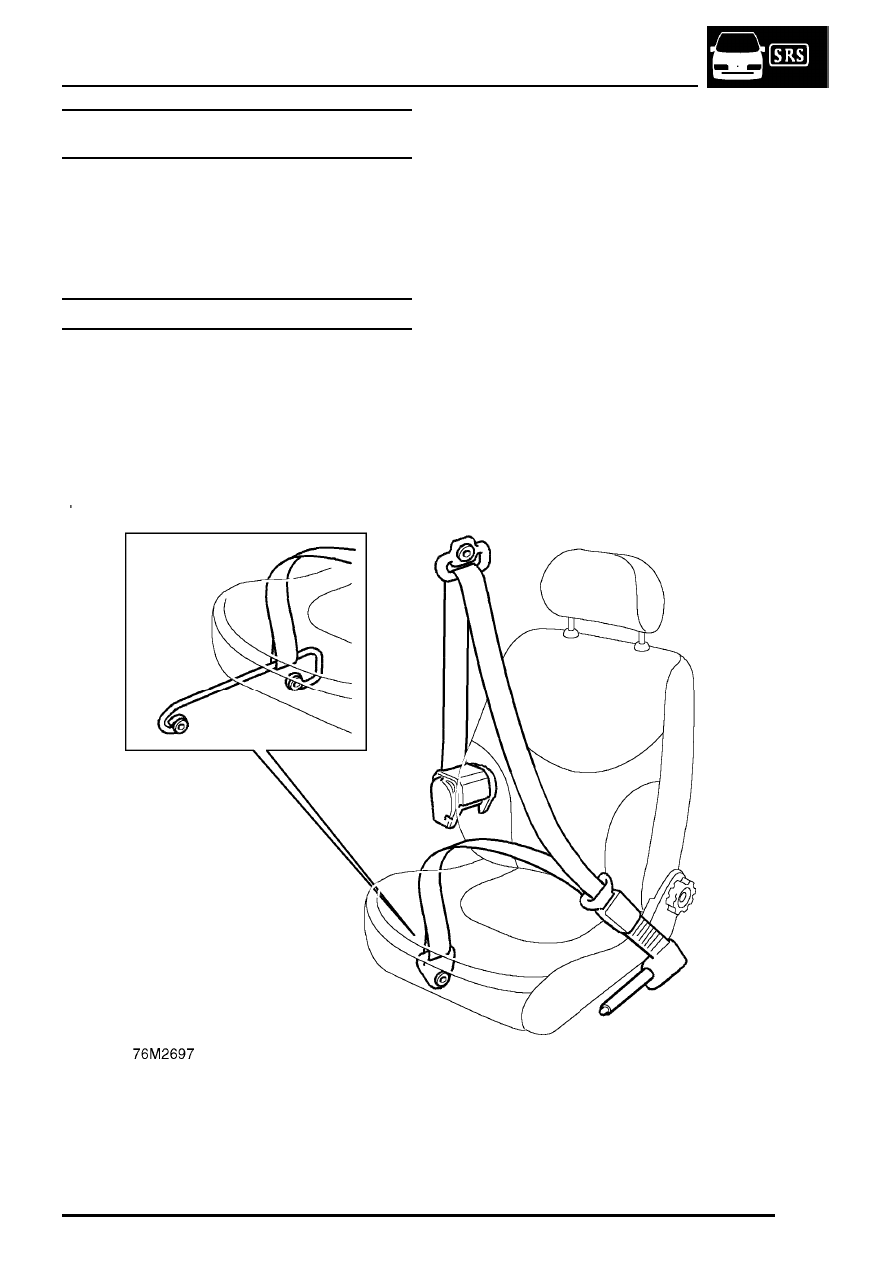Freelander Body Repair Manual - part 18

RESTRAINT SYSTEMS
DESCRIPTION AND OPERATION
1
SEAT BELTS & SUPPLEMENTARY RESTRAINT
SYSTEM
Seat belts are provided as the primary restraint for
all occupants. The supplementary restraint system
provides additional protection for front seat
occupants.
SEAT BELTS
An inertia reel, three point seat belt is installed at
each seat position. The inertia reels are of the
Emergency Locking Retractor (ELR) type which
incorporate a liftshaft locking system with webbing
sensor and car sensor activating mechanisms. The
webbing sensor activates the locking system if the
webbing is subjected to a sharp pull. The car sensor
activates the locking system if the vehicle is
subjected to sudden deceleration or a severe tilt
angle.
Front seat belts
The inertia reel of each front seat belt is attached to
the related B/C post, behind the finishers. The
webbing runs from the inertia reel, through a height
adjuster, to an anchor point either at the base of the
B/C post (five door models), or on a bar attached to
the inner sill (three door models).
The buckle assembly for each belt, consisting of a
buckle attached to a flexible stalk and an integrated
pretensioner, is secured to the inboard side of the
related front seat frame.
Front seat belt components
Three door models
Five door models